The Dennis Trident is a rear-engined, low-floor, double-deck citybus chassis built by British manufacturer Dennis Specialist Vehicles. It is also the first low floor double-deck bus chassis built by Dennis, and was particularly successful in the Hong Kong market, where over 1200 units were delivered.
Singapore Bus Services (now SBS Transit) ordered 20 units of the Dennis Trident with Duple Metsec DM5000 bodywork in 1998, and were registered in 2001. These were of the 3-axle 12-metre configuration, also known as the Dennis Trident 3. All units were retired by August 2018.
Design:
The Trident series of bus chassis were developed by Dennis Specialist Vehicles based on the Dennis Lance. It has a longitudinally mounted rear engine and the middle axle being the drive axle. An tag axle (third axle) was mounted behind the second axle to cope with the weight of powertrain components at the rear and to reduce the length of the rear overhang, and had no steering capability.
Engines for the Trident were all manufactured by American manufacturer Cummins. Originally supplied with the standard Euro II-compliant M11-305E engine delivering 305 horsepower, later Euro III Tridents (built after 2001) used the Cummins ISMe engines delivering 330 or 335 horsepower. Gearbox options included the Voith DIWA 863.3 and ZF 5HP590, but the Voith DIWA 864.3E was later made available.
Four different chassis lengths were produced for the Trident 3: 10.3m, 10.6m, 11.3m and 12m. It could be fitted with the Alexander ALX500 or Duple Metsec DM5000 bodywork. Voith DIWA and ZF Ecomat transmission options were available.
Production of the Dennis Trident 3 began in 1997, and continued through 2001 when the company underwent several mergers and rebranded to TransBus International. In 2002, a modified version of the Trident 3 chassis was incorporated into a completely new bus marketed as the TransBus Enviro500, which ultimately became its successor. Production of the Trident 3 chassis ceased that same year.
The two-axle variant of the Dennis Trident, known as the Dennis Trident 2, began production in 1998 and saw orders largely confined to the British market. It remained in production until 2006, when it was succeeded by the Alexander Dennis Enviro400. It also incorporated a modified Trident 2 chassis and was produced from 2005 onwards.
SBS Transit Dennis Trident 3 (SBS9671E – SBS9690A)
In 1998, Singapore Bus Services (SBS) placed orders for 20 units of the 12-metre Dennis Trident 3. They were registered between 6 July 2001 and 26 November 2001 as SBS9671E – SBS9690A.
| Basic Technical Specifications | |
| Engine | Cummins M11-305E, 10824 cc Euro II, six-cylinder, turbocharged & intercooled Power rating of 305 hp (224 kW) @ 1900 rpm Torque rating of 1250 Nm @ 1200 rpm |
| Transmission | Voith DIWA 863.3 gearbox, three-speed automatic |
| Bodywork | Duple Metsec DM5000 Bodywork Supplied in completely knocked down (CKD) kits by Duple Metsec of United Kingdom. Assembled locally by SBS Engineering Pte Ltd. |
| EDS | Electronic Display Signages (EDS) from Transit Media (original) Later units refitted with Hanover / Shanghai CanRun Electron Tech EDS units Orange LED matrix design |
| Air-conditioning | Denso rear-mounted air-conditioning unit |
| Other | Dana axles and braking system ZF steering gear Full air suspension |
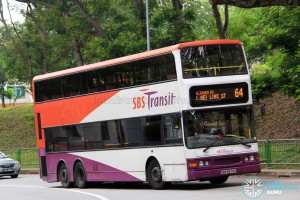
The Dennis Tridents were the first ever double-deck Dennis buses on Singapore roads. Ordered in 1998, the chassis were not built until late 1999 due to a large number of orders from Hong Kong bus operators, and these buses only entered revenue service in 2001. SBS had opted for similar specifications as the Hong Kong market, such as the Cummins M11, Euro II-compliant engine. The drive axle is the forward of the two rear axles, while the rear ‘tag’ axle has no steering capability.
Singapore’s Dennis Tridents are bodied with the last DM5000 body kits ever produced by Duple Metsec before being absorbed into a new company (Transbus International). By the time they had been assembled and registered in 2001, SBS had been re-branded as SBS Transit. These buses were equipped with Transit Media Electronic Display Signage (EDS) units when they entered revenue service, a rarity for buses in that era, where traditional plastic route destination signs were preferred as a cost-saving measure (apart from a few prototypes and SBS9810X). It would only be until the introduction of Scania K230UBs where the widescale use of EDS displays would take off. Some Tridents had their original EDS units swapped with Shanghai CanRun Electron Tech and Cool-Air units.
These buses made their revenue service debut on 10 July 2001, when the first 10 units were deployed on Services 85, 111, and Express 502. They have been under the control of Hougang Bus Depot ever since their introduction and can be found running medium-to-long haul routes in northeastern Singapore, such as Services 51 and 74
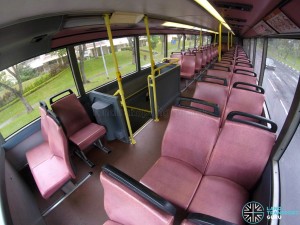
Interior:
The Dennis Trident 3 has a licensed carrying capacity of 132 passengers, comprising 56 upper deck seating, 29 lower deck seating and 47 standing passengers. The upper deck was unique in having a single side-facing seat next to the staircase due to space constraints.
The low-floor design was step-less from the front door to the rear row of seats, built close to Hong Kong specifications. Despite the ability to accommodate wheelchairs, no wheelchair ramp was installed. “Bus Stopping” and “Doors Closing” indicators were similar to Hong Kong specifications, a unique feature retained to this day. Exit doors use similar closing chimes to their Hong Kong counterparts, and the illuminated “Doors Closing” sign comes in Traditional Chinese along with English.
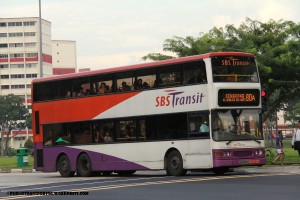
Additional Specifications:
Some Dennis Tridents had their original Electronic Destination Signage (EDS) units replaced by different models such as CoolAir and Hanover.
With a small fleet of Tridents, it is easy to see that SBS Transit’s maintenance leaves much to be desired, as compared to their Trident counterparts operating in Hong Kong.
All Dennis Trident buses were retired by August 2018, and replaced by MAN A95 buses.
EDS Specifications (at retirement):
Note: original EDS is Transit Media for all buses.
| EDS Model | Buses installed |
| Transit Media | SBS9686M, SBS9689E |
| Coolair | SBS9672C, SBS9674Y, SBS9679J, SBS9680D, SBS9690A |
| Hanover | SBS9671E, SBS9673A, SBS9675U, SBS9676S, SBS9677P, SBS9678L, SBS9681B, SBS9682Z, SBS9683X, SBS9684T, SBS9685R, SBS9687K, SBS9688H, |
Gallery
Interior photos on Page 2
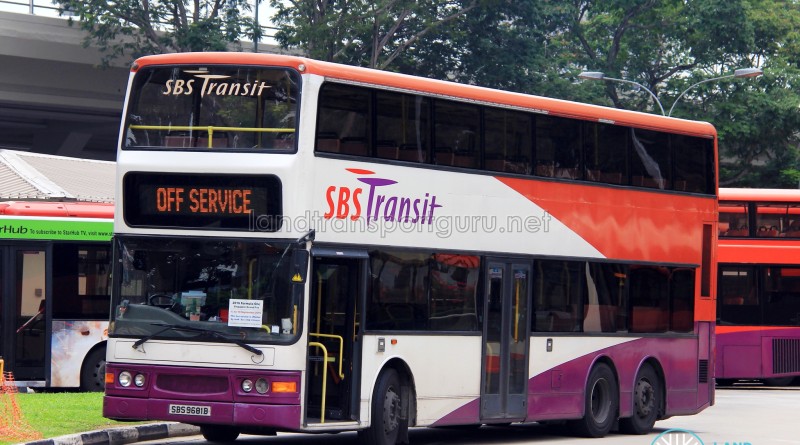
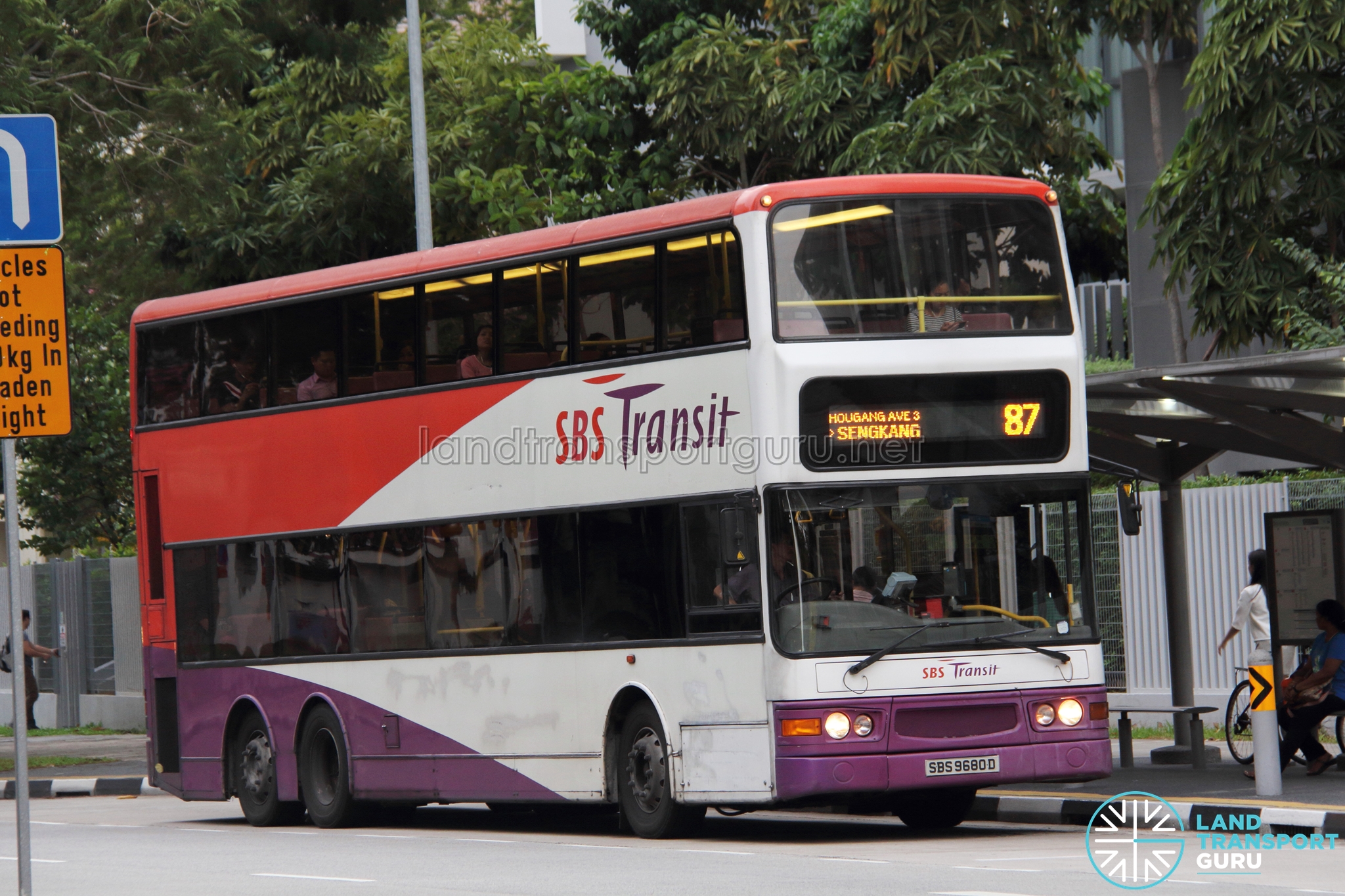
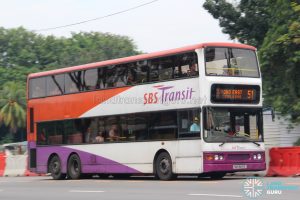
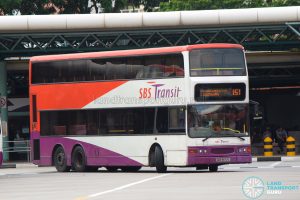


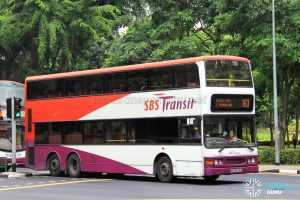
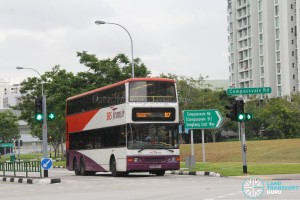
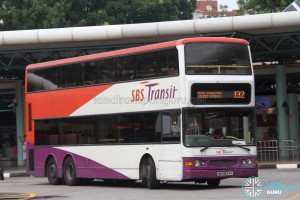
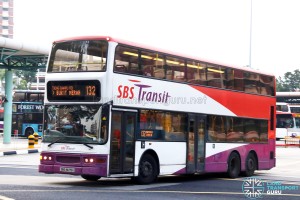


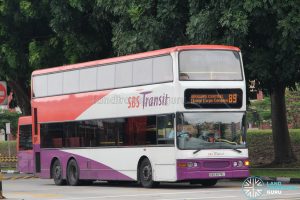

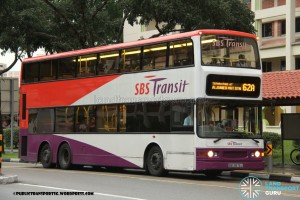
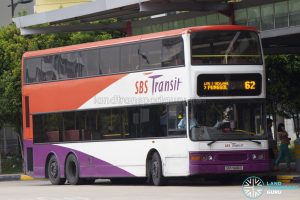

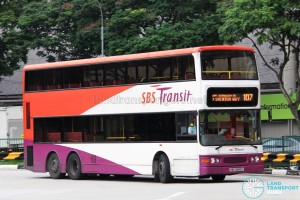
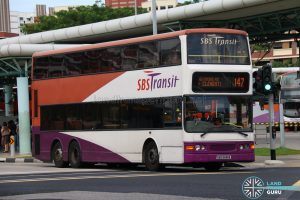
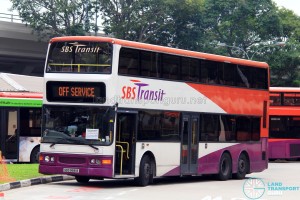
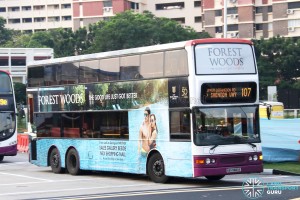
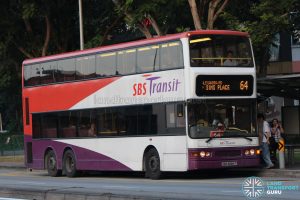
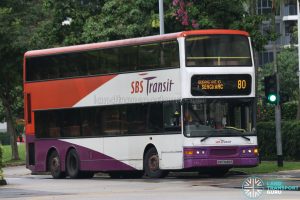
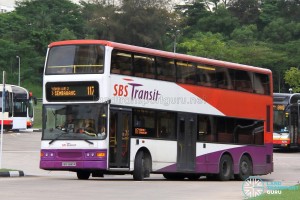
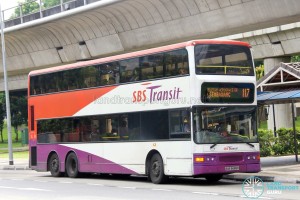
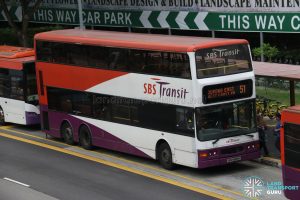
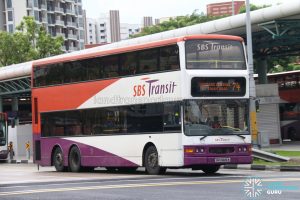
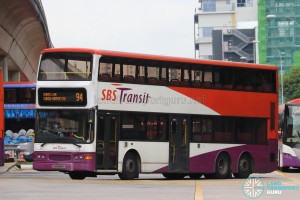
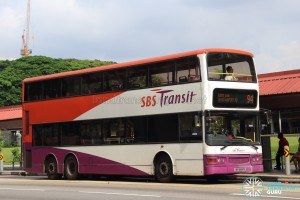
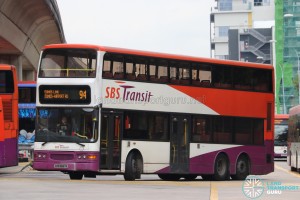
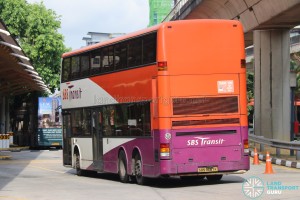
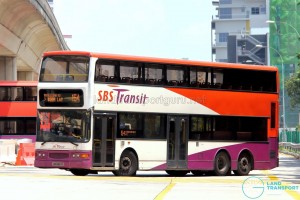

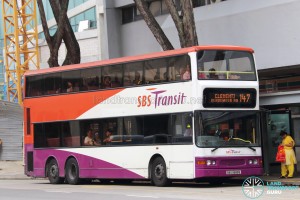

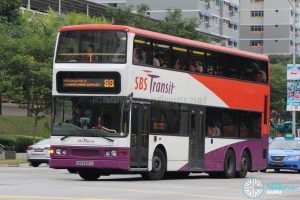

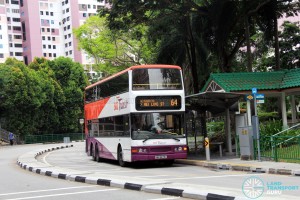
majority of them going to retire soon ezcept some of them got one year ezctension
Cut short. Dennis trident all now at HGDEP, awaiting transaction for scrapping and deregistration. For now, its still HGDEP SP since technically, the transaction didnt get through yet. As of 24 Aug 2018, 10:44PM.